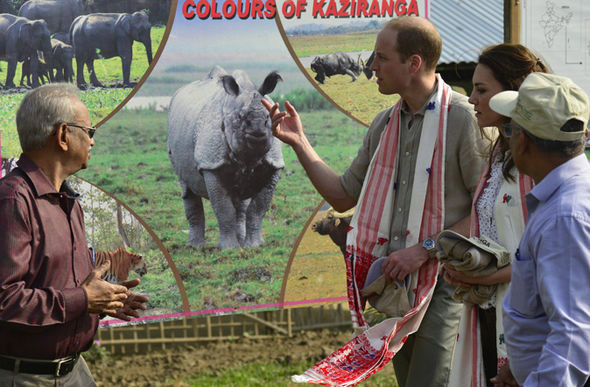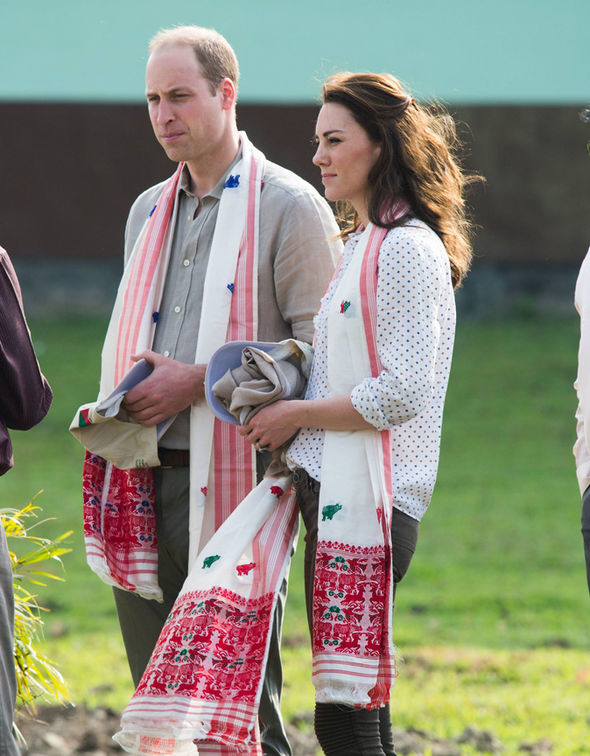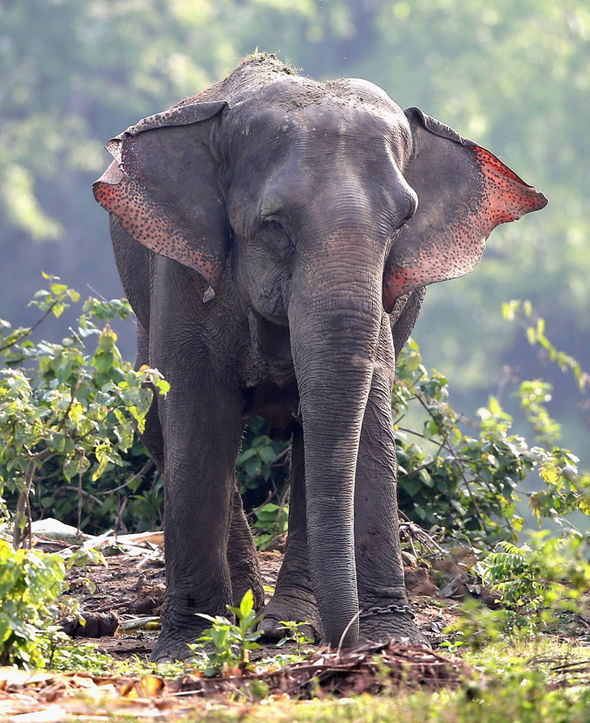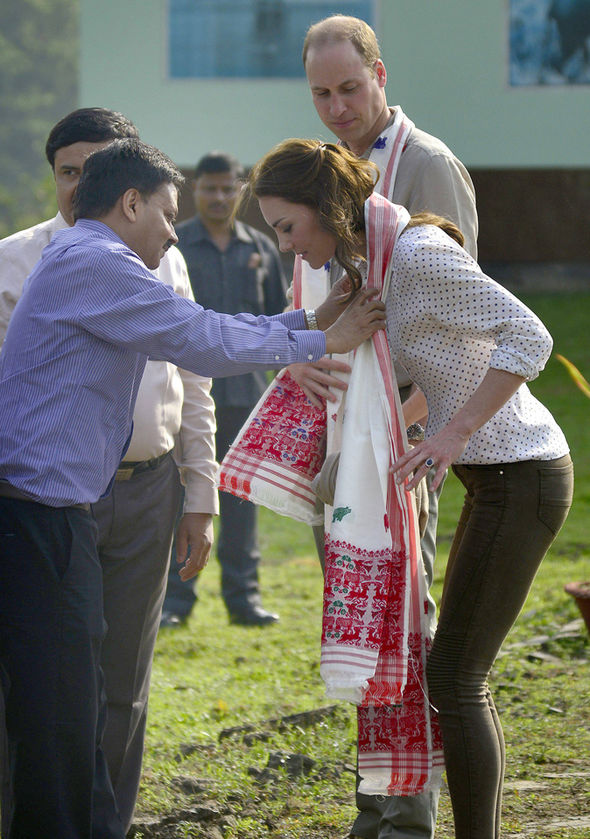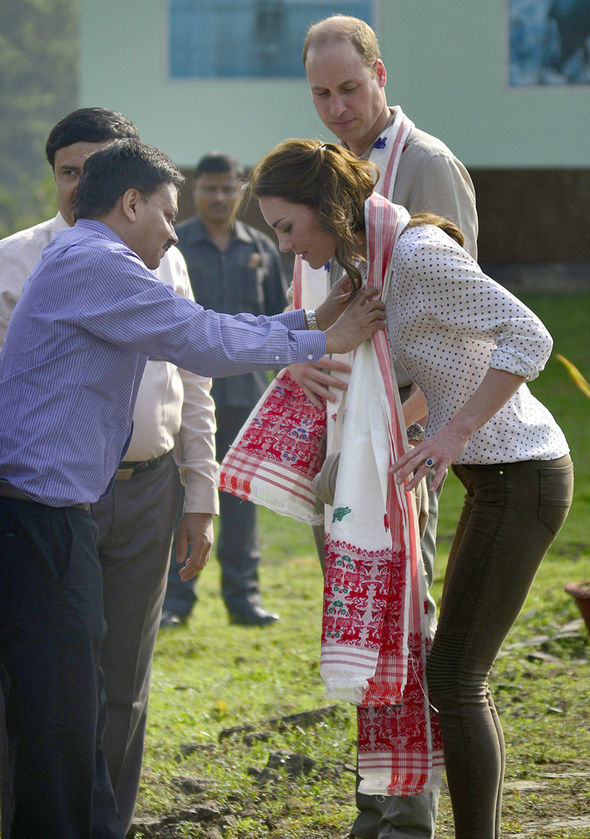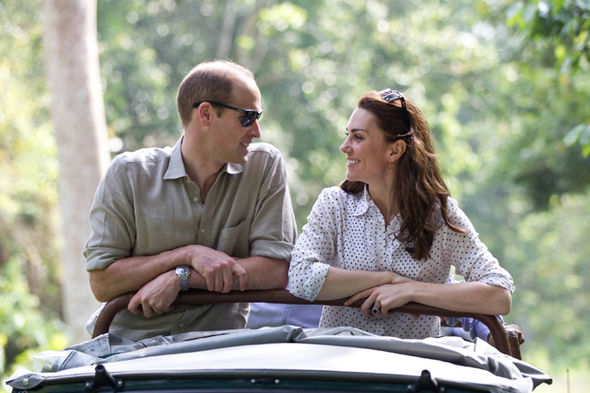Duke and Duchess of Cambridge enjoy safari with world’s most majestic animals in India
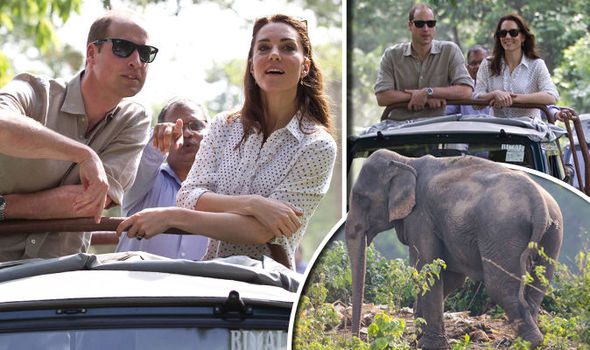
THE Duke and Duchess of Cambridge went on safari today, hoping to see rhinos, tigers and elephants in a national park in India.
Prince William and Kate, both keen to support conservation of some of the world’s most majestic animals and their habitat, toured the Kaziranga National Park in the far north-eastern state of Assam.
Kaziranga, occupying 165 square miles of grassland, swamp and forest plains surrounded by tea plantations and palm-fringed rice paddies, is home to a huge range of animals, including 400 species of birds, water buffalo, endangered swamp deer and two-thirds of the world’s 3,500 Indian one-horned rhinos. Their Latin name is Rhinoceros Unicornis.
In casual top, Zara jeans, and Sebago shoes, Kate, 34, donned sunglasses before setting off in a jeep beside William from Bagori in the national park, a World Heritage site on the banks of the River Brahmaputra.
As they prepared to set off, an elephant feeding a couple of hundred yards away trumpeted loudly.
The royal couple are spending two nights in the park, pursuing their interest in conservation and promoting the efforts of Indian park authorities to encourage the local human population to preserve the habitat and make the most of the tourist attraction.
William, president of the United for Wildlife conservation group, has long wanted to visit Kaziranga.
The park is situated on a flood plain and the vital annual floods drive animals up to the adjacent hills.
In between the park and the hills, however, villages are spreading out onto land used for centuries by elephants and rhinos.
The authorities here have warned that the area is highly vulnerable to climate change, as the annual floods and ecosystem may be affected by reduced or increased snowmelts from the Himalayas.
Park rangers have also reported an upsurge in rhino horn poaching.
Traffickers in South East Asia are now marketing Indian rhino horn as ‘fire horn’ and lying about its increased potency in traditional Chinese medicine when compared to African horn.
William was expected to speak out against the lies threatening the species later today.
The royal couple, who were on the fourth day of their week-long tour of India and neighbouring Bhutan, arrived in the national park last night after flying in from Delhi.
The royal couple saw wild elephants, rhinos and many more species during their open-top tour of part of the national park.
Kate, a keen amateur photographer, recorded the special moments on her camera.
At one point they saw a rhino having a morning bath in a river.
Upon arrival at the entrance to Kaziranga the couple were welcomed by local people and park staff, including the outgoing director of the national park, MK Yadava.
The couple walked over to their freshly-polished Maruti Suzuki Gypsy 4×4, where chilled bottles of water and face cloths were tucked into the seat pockets for their journey.
Dressed in a cream RM Williams blouse and her brown Zara jeans, the Duchess followed her husband's lead and climbed into the jeep.
Mr Yadava sat behind them and they were accompanied by a driver and a ranger armed with a rifle loaded with tranquiliser ammunition.
The royal couple put on their RayBan sunglasses and were shown how to use their binoculars.
As they pulled away, Kate squeezed William¹s thigh and said, “We’re all safe” and both of them grinned.
William quickly spotted a rhino mother and her baby wading in a muddy pool in the distance.
“Oh wow,” gasped Kate.
They both then took turns to look through their binoculars.
They also spotted a large monitor lizard and as they entered a forested area half an hour into the safari, Kate and William stood up in the car to get a better look around.
Occasionally they would lean back and ask Mr Yadava questions about the wildlife.
Possibly the highlight of their Kaziranga trek was a huge rhino blocking the road ahead.
The couple gasped as they caught sight of the huge animal just 50 yards away from them.
“This is amazing!” said Kate.
“It’s amazing to be this close,” William added, before a ranger called out loudly to scare it off the road.
After almost an hour of safari, the Duke and Duchess arrived at the Bimoli Anti-Poaching Camp in the centre of the park, where they were greeted by a group of rangers.
“It’s been an incredible journey,” William said of their safari as he shook the hand of a young ranger.
After brief introductions, the couple sat down in a circle by the river with the rangers and park staff and discussed the park’s successful efforts at protecting animals from poachers.
The rangers remain vigilant although numbers of poached rhinos have decreased — 17 rhinos poached in 2015, compared to 27 in 2014.
Park guard Mahanda Barman, 34, told the couple about the time he had a fight with a poacher after hearing gunshots by the river in the north side of the park.
“It can be dangerous,” he told William via a translator.
“That evening there was crossfire between poachers and my team here. The butcher ran off and was later found dead. We recovered rifles and ammos. These things happen a lot. It’s a big problem.”
“You’re all doing an incredibly important job,” William told Barman.
“I’m incredibly proud of everything you’re doing.”
Ranger Salim Ahmed, 46, left the royal couple speechless after telling them about his encounter with an angry rhino one evening.
“I was charged at in the evening,” he said.
“He hit me once but four of my fingers were broken, my arm and leg was broken too. I had to stay in hospital for 45 days.”
But Mr Ahmed said that staff at the park never fire at animals.
“This is their home, we are their friends,” he said.
Kate seemed happy to discover that there are female rangers working at the park.
“That's really great,” she said.
“I was actually wondering if there were female rangers.”
The final 30 minutes of their safari was a private moment for the couple, as they travelled the final stretch without media and some of their protection officers.
Keen photographer Kate brought her own Canon DSLR camera on the trip and no doubt would have used the private time to capture some of her own pics.
Политика конфиденциальности | Правила пользования сайтом
